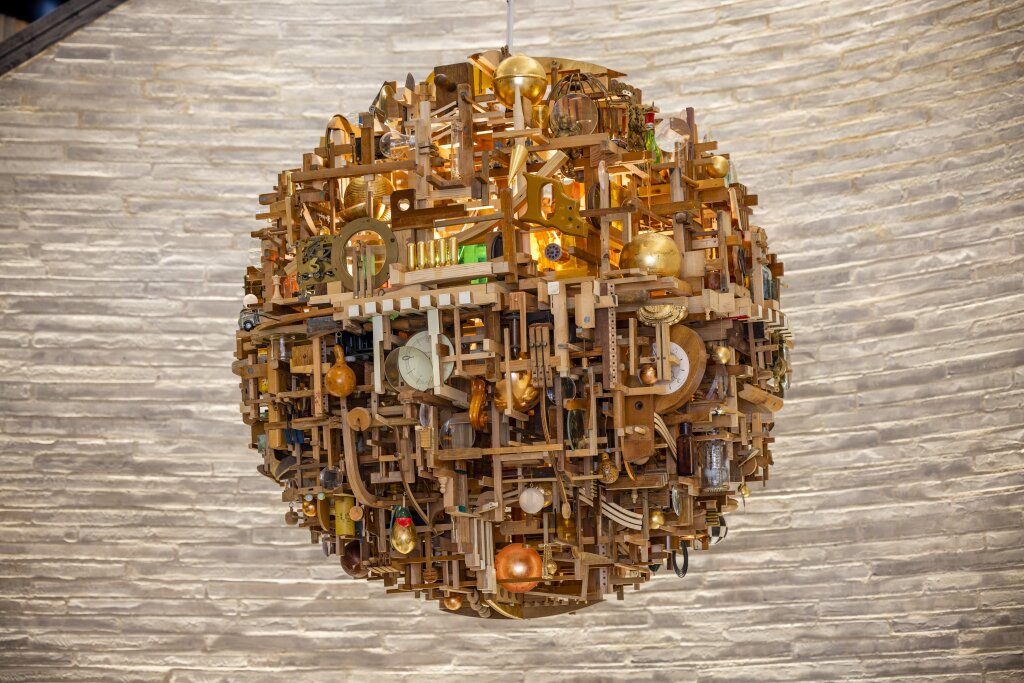The impact of good art on development may be small but can be profound.
The conventional wisdom in a market downturn is to cut costs, especially for non-essentials. For many, art might sit near the top of that list, yet, despite the testing market, art is playing a growing role in successful property development.
This is because factors such as experience and placemaking have never been more important, whether that’s to attract top-tier occupiers to an office development, mitigating against the backlash towards identikit new-build residential developments or trying to create a sense of community at logistics parks - and artwork plays a vital role in creating that intangible sense of place.
This may sound like preaching to the converted, given that mixed-use development has been favoured for some time by planners, developers and occupiers, and that following the pandemic the popularity of areas with a well-rounded cultural offering has been self-evident. However, as a smaller cog in the well-rounded machine and in the face of the tougher economic backdrop, it’s interesting to look at the role of art as businesses continue to try and attract staff back to the office. Art has the capacity to inspire, create a sense of arrival and foster creativity – all elements that give people a reason to come into the office rather than working from home.
At The Kensington Building, for example, one of our office developments in London, we commissioned "Sphere 14", a re-purposed artwork by Lesley Hilling that incorporates waste objects such as fragments or marble, wood, metal and other salvaged items into a stunning focal point of the double-height reception. In addition, we partnered with Kensington and Chelsea Art Week to donate a temporarily unused space in the Kensington Arcade to host a group exhibition over the summer from multimedia artist and musician Jack Laver, offering a prime location to showcase and support the latest creative talent. This adds to Kensington’s already enviable cultural scene and is part of the reason why the building is setting record rents for the area.
“While Kensington is hardly short of cultural attractions already, we believe in the importance of contributing to an area and not resting on the existing laurels, especially when other districts of London such as Canary Wharf are putting so much effort into bolstering their cultural dimension. After all, it’s not a coincidence that areas such as Bermondsey, Shoreditch and Farringdon, where new, high-quality office buildings meet a rich and diverse culture, are a commercial success story.
”
It’s not just well-heeled areas like Kensington where this approach holds true though. In Slough, the recently launched Art Around Slough project is seeking to transform perceptions of the town. By commissioning 50 large public art displays, the first of which was unveiled outside our 100,000-square-foot The Future Works office development earlier this summer, the organisers aim to create a sense of pride and identity among residents, while also attracting visitors and showcasing the town’s vibrant cultural scene. The project will help to create a new narrative around Slough and showcase the area’s potential, as the substance of the town’s regeneration – British Land’s huge £1 billion Slough Central regeneration scheme – gets underway.
Public art has the capacity to put a place on the map, and, at its best, can become a catalyst for regeneration – notably Anthony Gormley’s Angel of the North, which symbolised the revitalisation of Newcastle and the north-east of England. On a smaller scale, Margate and Folkestone have redefined themselves through art too, in turn boosting their popularity as places to visit and live.
An irrelevant sculpture plonked in a random location isn’t the answer of course, but sensitively integrated artwork that reflects a building’s history or USP, or involves the local community in some way, can make a huge difference to the character and feel of a place. Lesley Hilling’s piece at The Kensington Building reflects the recycled nature of the building, which reused the concrete frame of the previous building on the site, saving 4,500 tonnes of carbon compared to an equivalent new-build structure.
While art is only a relatively small part of an area or development, when done well the effect is profound. As companies compete to give employees and residents the best possible experience, it is crucial to look up from the bottom line from time to time and aim to get ‘arts’ racing.
